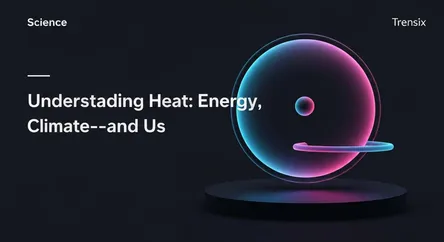Science
Understanding Heat: Energy, Climate, and Us

Explore what heat is, why it's a critical topic due to climate change, and how rising temperatures are profoundly affecting our health and daily lives.
What is it?
In science, heat is defined as the transfer of thermal energy between two systems that are at different temperatures. This energy flows from a warmer object to a cooler one. It is not something an object possesses, but rather the process of energy moving. This energy transfer happens due to the kinetic energy in the particles of matter; the more heat, the more motion in the atoms and molecules. While often confused with temperature, they are distinct. Temperature measures the average kinetic energy of particles in a substance, whereas heat is the energy that flows between them.
Why is it trending?
Heat is a major topic today due to climate change, which is causing more frequent, intense, and prolonged periods of extreme heat, often called heatwaves. The phenomenon of a "heat dome," where a high-pressure system traps hot air over a region, is intensifying these events. Scientists are increasingly studying the escalating risks associated with rising global temperatures. The heat index, or the "feels like" temperature, is also gaining attention as it's rising faster than air temperature, indicating a greater stress on human bodies than thermometers alone suggest.
How does it affect people?
Extreme heat poses serious risks to human well-being. Physiologically, it can lead to dehydration, heat exhaustion, and life-threatening heatstroke. It exacerbates chronic conditions like cardiovascular and respiratory diseases. Mentally, high temperatures are linked to increased stress, anxiety, and cognitive impairment. Socially, extreme heat is changing our way of life, forcing people to alter daily routines, stay indoors, and rely more on air conditioning, which in turn increases energy demand. This also leads to reduced work productivity and economic losses.